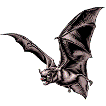Museum, University of Nebraska State

University of Nebraska State Museum: Mammalogy Papers
Document Type
Article
Date of this Version
1979
Abstract
Bishop and Austin (1957) in their study of variation in mammalian spermatozoa suggested that the sperm of each mammalian species was probably unique. Although complete volumes have been written on the ultrastructure of spermatozoa (for example Baccetti, 1970), particularly of humans and domestic animals, there is still relatively little information available on the comparative gross morphology of spermatozoa. McFarlane (1963), Forman (1968), and Forman et at. (1968) made significant contributions to our understanding of the use of sperm morphology in establishing systematic and phylogenetic relationships of birds and mammals. However, there have been very few similar studies published to this date.
The use of sperm morphology as a systematic character among mammal~ is relatively new, beginning with the study of British murid rodents by Friend (1936) Other studies dealing with rodent sperm include those of Braden (1959), Hirth (1960), Wooley and Beaty (1967), Genoways (1973), Helm and Bowers (1973), and Linzey and Layne (1974). Hughes (1964, 1965) compared the morphology of sperm of 18 species of marsupials representing five families, and Biggers and Delamater (1965) and Biggers (1966) reported on the spermatozoa of several genera of American marsupials. Griffiths (1968) presented data on the sperm of the echidna and Bedford (1967) reported observations on the fine structure of the spermatozoa of two primates in addition to man. An especially important contribution is that of Martin et at. (1975). They used scanning electron microscopy to compare spermatozoa of 16 species of primates representing four families and concluded that sperm morphology might be valuable in gaining better understanding of intrageneric relationships among primates.
Six studies have described the sperm of Rhinolophus !errumequinum, and Hirth (1960), Fawcett and Ito (1965), Wimsatt et al. (1966), and Forman (1968) reported on various aspects of the spermatozoa of species of vespertilionid bats. Forman (1968) was the first to present information on the sperm of members of the family Phyllostomatidae. In his study, he presented information on eight species representing four of the six subfamilies. In the same year, Forman et al. (1968) reported on two additional phyllostomatid species, Desmodus rotundus and Diphylla ecaudata, of a fifth subfamily, the Desmodontinae.
Over the past seven years, we have accumulated data on the sperm of phyllostomatid bats in the course of several other studies of this family. This has resulted in material for 35 species, 28 of which have not been studied previously. Through new staining techniques, we also have been able to acquire new information on the seven species for which some data were presented previously. The results of our studies and their systematic implications are discussed below.


Comments
Published in Biology of bats of the New World family Phyllostomatidae, Part III (Robert J. Baker, J. Knox Jones, Jr., and Dilford C. Carter, eds.) Special Publications of the Museum, Texas Tech University, 1979, pp. 177-204. Copyright 1979 Texas Tech University. Used by permission.